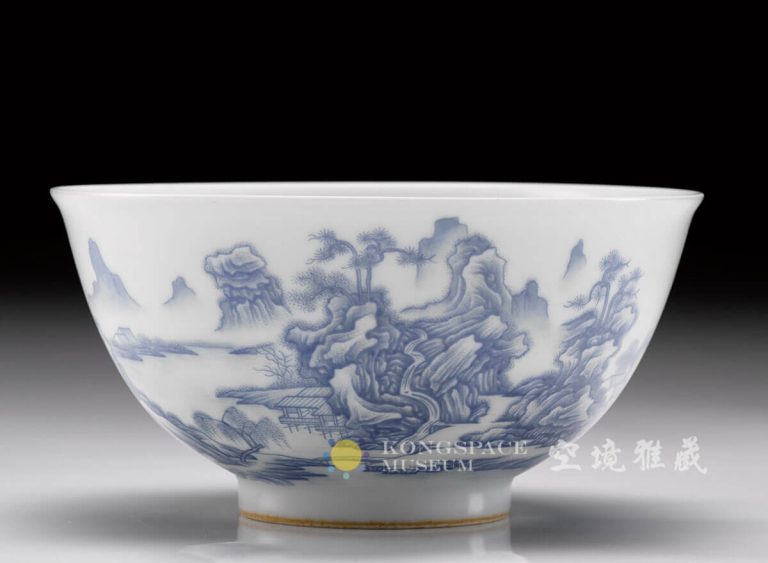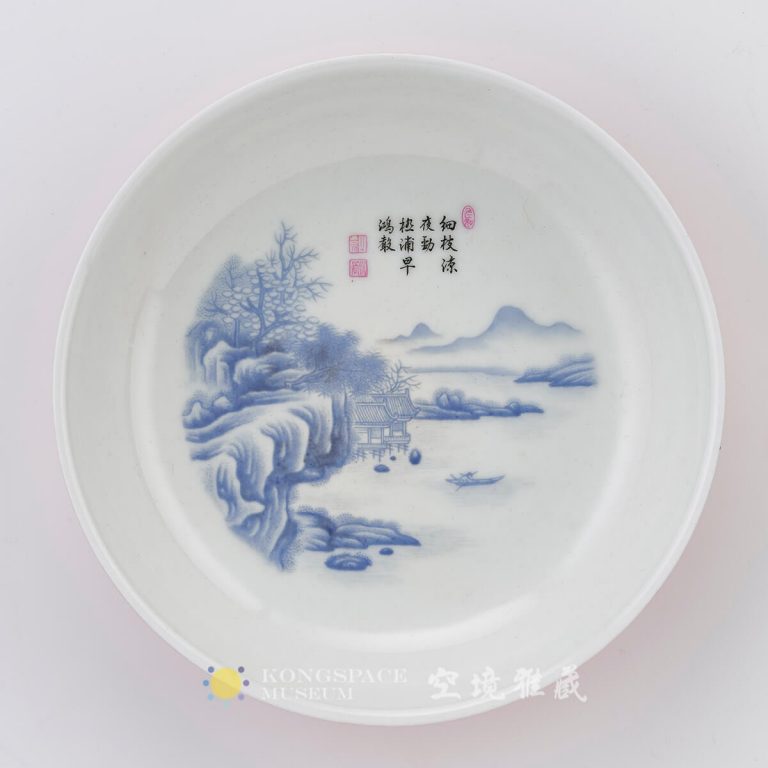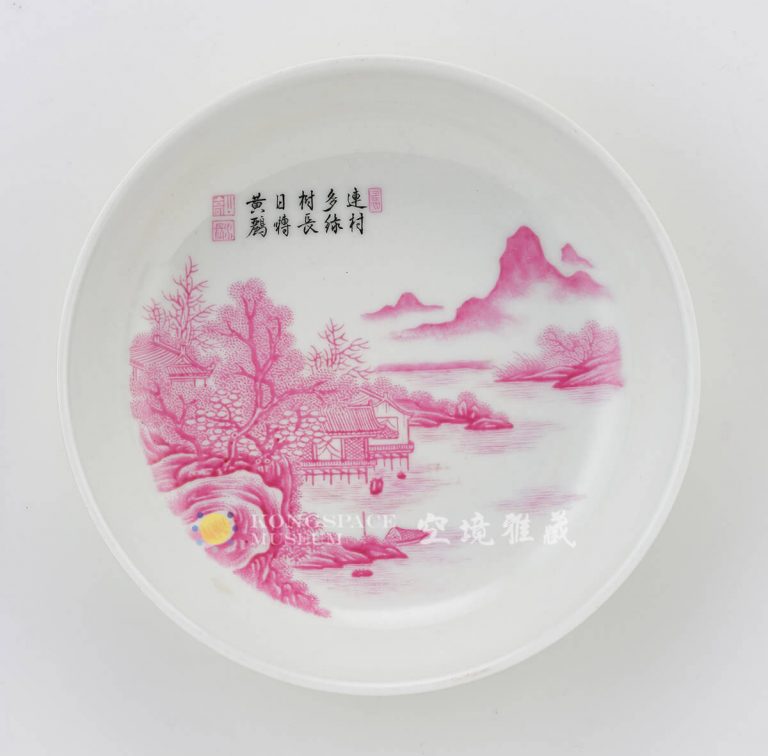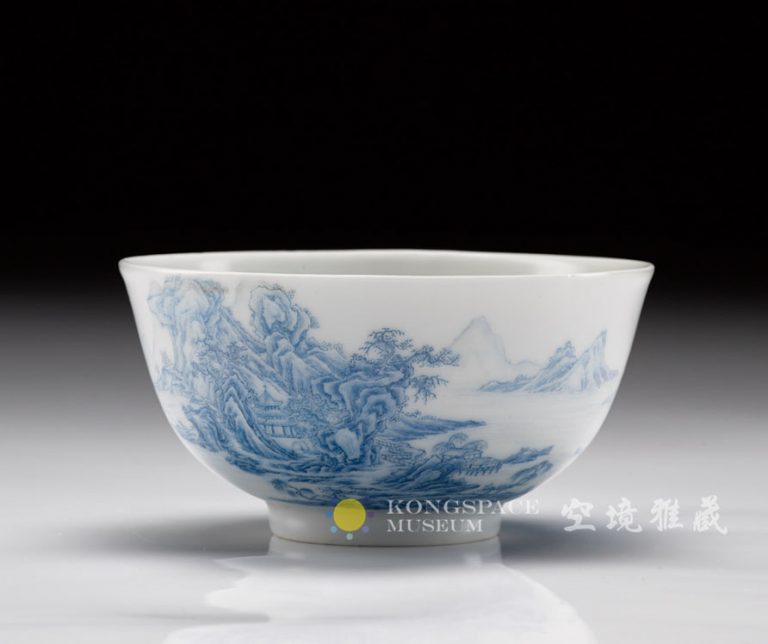This porcelain dish, a remarkable exhibit at the KongSpace, features a flared rim, a gently curved wall, and a low ring foot. The exterior is coated in a rich red glaze, while the interior presents a white background. At the heart of the dish, an exquisite scene of pavilions amidst a landscape is rendered in enamel colors. Golden and jade pavilions nestle among verdant mountains and lush trees, creating an ethereal, secluded paradise. Among these elements are clusters of trees, rocky outcrops, flowing rivers, and auspicious clouds, all contributing to the sense of a mystical retreat from the world.
Suspended in the sky, auspicious clouds and the hazy outlines of distant mountains frame a poetic inscription. The verse, "Trees join the southern mountains close; smoke envelopes the northern islet far," is a couplet from the Tang Dynasty poem "At a Banquet in the Eastern Villa of Princess Changning" by Li Qiao. Preceding and following the verse are three red seal marks, reading "Shou Ru" (longevity as enduring), "Shan Gao" (mountains high), and "Shui Chang" (waters everlasting), respectively.
The base of the dish bears a cobalt blue double-square frame enclosing the four-character mark "Made in the Qianlong Period" in Song-style regular script, attributing its creation to the illustrious period of the Qing Dynasty. This masterpiece epitomizes the artistic sophistication and cultural richness of its era.
Suspended in the sky, auspicious clouds and the hazy outlines of distant mountains frame a poetic inscription. The verse, "Trees join the southern mountains close; smoke envelopes the northern islet far," is a couplet from the Tang Dynasty poem "At a Banquet in the Eastern Villa of Princess Changning" by Li Qiao. Preceding and following the verse are three red seal marks, reading "Shou Ru" (longevity as enduring), "Shan Gao" (mountains high), and "Shui Chang" (waters everlasting), respectively.
The base of the dish bears a cobalt blue double-square frame enclosing the four-character mark "Made in the Qianlong Period" in Song-style regular script, attributing its creation to the illustrious period of the Qing Dynasty. This masterpiece epitomizes the artistic sophistication and cultural richness of its era.





